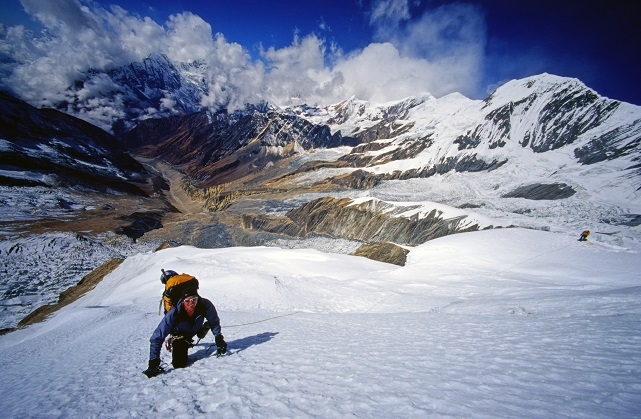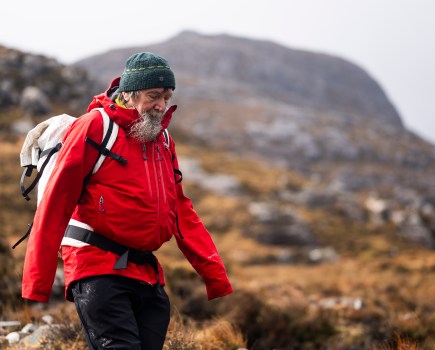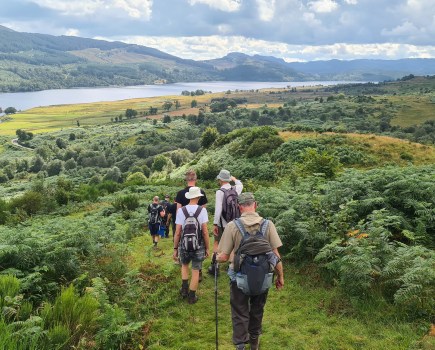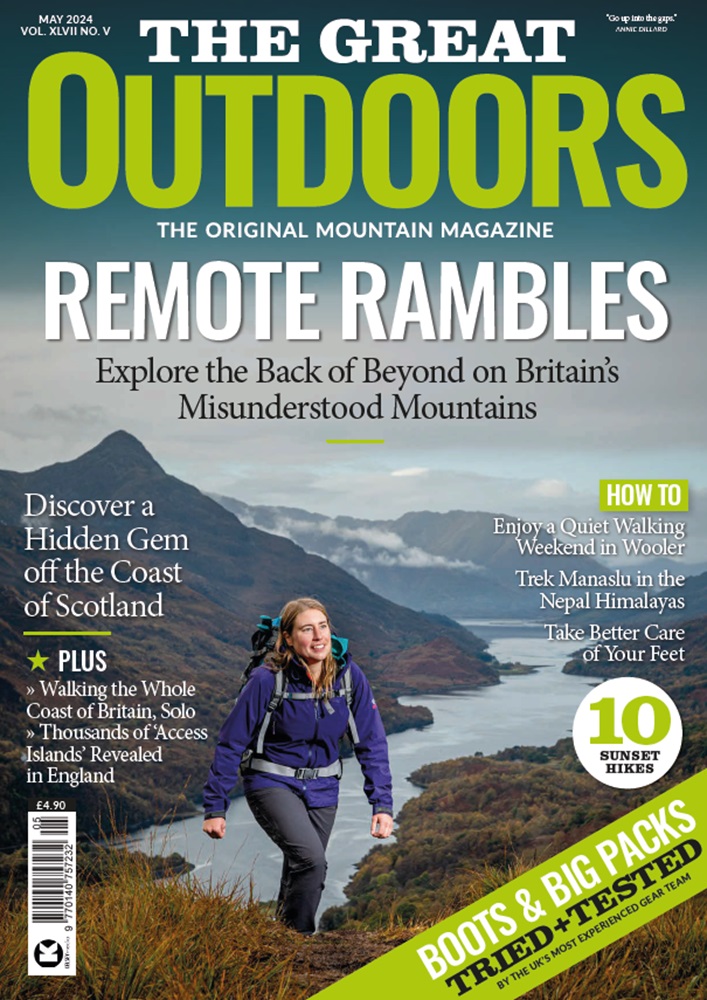Main image by Ian Parnell
“I’ve been up 11 times now,” answers Kenton Cool when I ask him what his Everest tally is up to. Considering that his first successful attempt was just 11 years ago and that Kenton is only 42, such a feat is nothing short of phenomenal. But this is one of the most successful British mountain guides we’re talking about here, someone who has not only climbed the world’s highest mountain year after year but who once reached its summit twice in a week. And though he makes Everest sound like a breeze, his attitude to the mountain is one of deference.
“I was really lucky that a number of years ago I was pretty much shouted at during a party in Chamonix by (expedition company owner) Russell Brice,” he says. “He was trying to get me to work on the north side of Everest. I said, ‘No no no, I like working on the south – the original Hillary and Tenzing route.’ Russell replied, ‘Why?!’ and I told him, ‘Well because I really understand it now – I’ve got it wired.’ He suddenly got really cross, slammed his beer bottle down and told me, ‘Don’t ever think that you’ve got the mountain tamed, because the moment you do, she will turn around and bite you so hard.’
“To have such an established figure getting so vocal with me – it really hammered home that you can’t take Everest for granted. You have to go there with the utmost respect. Now, I think that’s one of the reasons I’ve been so successful – with no frostbite and no fatalities on any of my trips – is because I do go there thinking that it’s going to be a battle.”
Along with this wariness, Kenton also credits his success to a business-like approach to expedition-making, an approach that might at first seem incongruous. “I always say that a successful expedition comes down to good project management,” he explains. “It brings a mountain more in line with a corporate environment, but that’s what we do – I’m a professional mountain guide. It’s about weighing up the options and choosing the right decisions for the team and individuals I’m looking after.” If Kenton Cool is a businessman, then he’s one of the Richard Branson variety; an independent-minded gogetter, a trail-blazer. “Too many people will follow others… if you sit down and make your own decision then generally you can have a successful expedition,” is his rationale.
One of his greatest achievements came in 2013 when, in the company of Dorje Gylgen, he made the first completion of the Everest Horseshoe, also known as the ‘Everest Triple Crown’. In just seven days they climbed Nuptse, Everest and Lhotse – all mountains of over 7800m. It was one of the most outrageous expeditions of recent years, in which they ascended and descended a total of 10 vertical kilometres. Kenton lost two stone of weight in the process.
On the Geneva Spur, by Keith Patridge
One Man’s Everest
This month sees the publication of Kenton Cool’s autobiography, One Man’s Everest. Inside, he makes a surprising revelation – that he hasn’t actually set foot on
the highest point of Everest. “Most people don’t stand on the very top, purely because it’s quite small and very steep,” he explains. “You walk up the flank on the southern side and you can get high enough there and sit just down from
that summit; for most people that’s more than adequate. It definitely classes as a summit – you are there. But to stand on the tippy, tippy top there would only be room for one person at a time and it’s quite precarious.” However, it’s not the element of danger that holds him back; it’s discomfort of a different kind. “For the locals, Sagarmatha (the Nepalese name for Everest) is very special and it means something to them that’s entirely different to the average Westerner. That’s why as tourist climbers – which is what we are – we should respect that and stand shoulder-to-shoulder with them. She has allowed us to climb her and I don’t see the need to totally desecrate her.”
When author Jon Krakauer made the summit of Everest, he described how he “just couldn’t summon the energy to care.” Reaching the top of the world for the first time was a very different experience for Kenton. “It was absolutely sublime,” he reflects. “I could write a whole book about the feeling. To do those last 20 to 30 metres knowing that you are about to succeed in a dream of climbing Everest, and then standing there… everything is beneath your feet.” This first climb was blessed with rare good conditions, and Kenton remembers a “dark, dark blue” sky, contrasting sharply with the snow-capped mountains. “It was mesmerisingly beautiful,” he recalls. “I couldn’t have asked for conditions to be any better.” Since then, he’s guided many others to the summit, most notably Sir Ranulph Fiennes. They’ve had two cracks at the mountain together: in 2008 they had to turn back only 300m below the summit; they then returned with success in 2009. I can’t be the first person to ask Kenton how he got on with his famous client, a man who had been one of his childhood heroes. “On the one hand he’s brilliant; he’s the
best client in the world as he’s got absolutely no interest in learning about climbing – and it’s very enjoyable to guide someone like that,” he replies. “On the other hand it’s absolutely infuriating that he has no inclination to learn because over five years he was still putting harnesses on back-to-front. But I feel very honoured to call him a friend. He was one of my inspirations growing up and still is today, and to work with a hero is fabulous.”
Never say never
Can Kenton Cool picture himself climbing Everest until he’s Fiennes’ age? “I’m not sure I want to be breaking records when I’m 71,” he replies. “He’s phenomenal – the drive he has is unique. I’d love to be spending time in the mountains still, but he punishes himself so hard and I’m not sure I’ll have the capability of doing that when I’m that age. But I guess never say never.”“Never say never” could be Kenton’s motto. In his book he discusses a terrible climbing injury 20 years ago in North Wales. A 12ft fall led to him shattering both ankles. He was told by doctors immediately afterwards that it was likely he wouldn’t walk properly again, let alone climb. “When someone tries to take away what’s important to you then generally you fight back,” he says. “After the initial shock turned into anger, that then soon turned into determination. I wanted to prove that individual (his first consultant) wrong. I only really understood that when I was writing the book. The consultant was telling me hard facts, but now perhaps I should look him up and thank him, because it was partly down to him that I have this drive. The second consultant was entirely different. Instead of telling me that I wouldn’t walk, he simply said, ‘I will rebuild your feet so that you can wear normal shoes, what you do from that point forward is up to you – if you want it, you will do it.’ These guys were a yin and yang. I’m now very tenacious. And I think it came from those days.”
In Alaska, by Ian Parnell
Kenton hasn’t been out to Everest this year. The mountain is essentially closed to climbers since April’s earthquake. However, he is in touch with Nepalese friends in the region. “It’s still very difficult for them,” he says. “They’re into monsoon season now and there are still tens of thousands that are homeless and living in tents, still having problems getting clean water. And this is all over the country: in Kathmandu, in the hill villages, everywhere. Of course, with the monsoon also come some of the waterborne diseases like cholera and typhoid. So it’s desperate times but they are a resourceful people, the Nepalese, and they always see positives and not negatives. My Sherpa friends, most of them are OK and their families are on the mend. They’re certainly looking to the future and not to the past.”
While he waits for his chance to return to Everest and to its surrounding high peaks he’s got plenty to be getting on with. “I’m off to Bolivia for a couple of weeks with a client, and then back out to the Alps working as a guide,” he says. “Then I’m off with a couple of chums to try a new route on Nanda Devi East in the Indian Himalayas.” Is life ever quiet for Kenton Cool? His response: “Always busy!”
One Man’s Everest by Kenton Cool is out now.







